An M14 Garand?
May 12th, 2020
4 minute read
Before the Springfield Armory, Inc. M1A, there was the M14, and before that there was the M1 Garand. While the M1A is a direct, semi-automatic-only version of the M14 military rifle, the M14 evolved from the M1 Garand in an unusual process — both military and commercial.

The M14 represented a modernized update to the M1 Garand, with numerous upgrades and enhancements. However, the most obvious change was the switch from the Garand’s en-bloc clip system to the M14’s detachable box magazine system.
Comparatively few rifles representing the intermediary steps between the M1 and the M14 exist today; while museums have a handful of examples from the U.S. Government’s Springfield Armory, perhaps only a few hundred (or at most, a few thousand) commercial M1 rifles modified to include M14 features are in the hands of individuals today. Here’s a quick look at one.
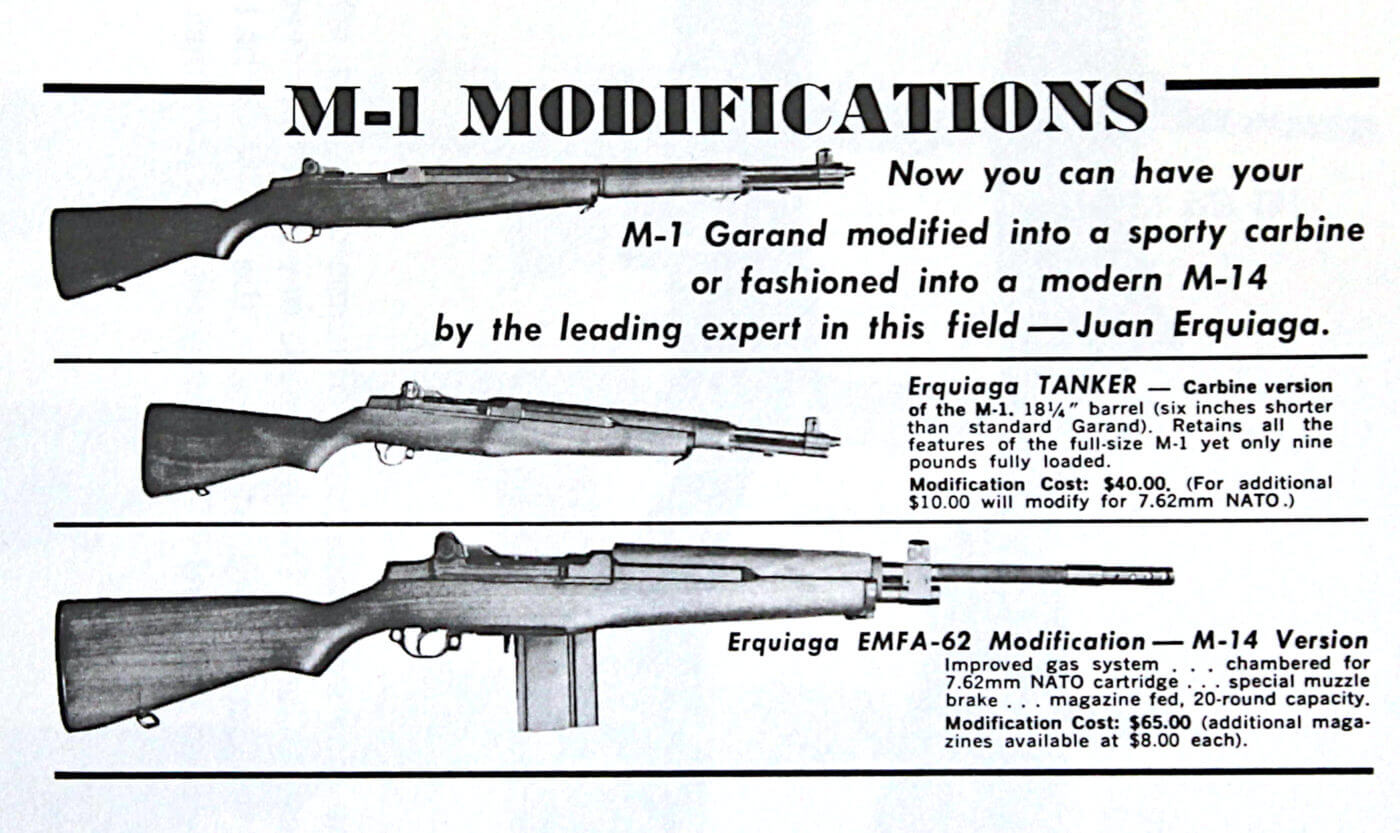
Box-Mag Garand
Most shooters familiar with the subject view the M14 rifle as a 1950s-era 20-round box-magazine upgrade over the 1936 M1 Garand’s eight-round en bloc clip. However, few know that John C. Garand’s first prototypes of his now iconic “Rifle, Caliber .30, M1” for the government’s Springfield Armory indeed featured detachable box magazines. (To learn more about John C. Garand and the development of the M1 Garand rifle, click here.)
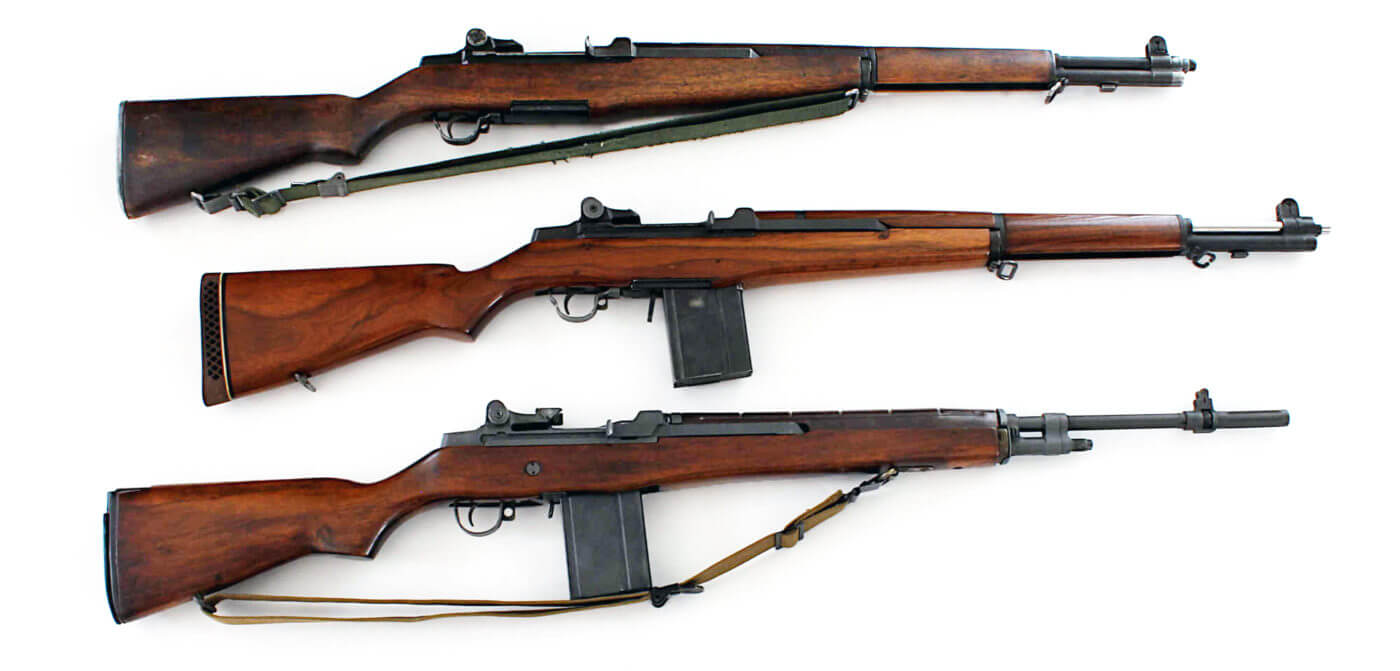
His T1919 model (“T” indicates “Test”) of that year had a detachable magazine, and a version of his T1920 model could also take detachable magazines. In design and testing of many prototypes that would occupy Garand and Springfield Armory for 17 years, a vacillating Ordnance Department and U.S. Army eventually declined Garand’s superior firepower box magazine design and a proposed .276 caliber cartridge and ordered the eight-round en bloc clip M1 rifle for the then-current M2 Ball .30-06 cartridge.

Garand went on to convert his rifle in 1944 to select-fire and accept a detachable box magazine; this T20 model eventually morphed into the M14 and fired the new 7.62x51mm NATO cartridge decades after he first offered a box mag design.
The post-war surplus of M1 rifles soon became available to NRA members through the Army’s Director of Civilian Marksmanship program. Beginning in the 1950s, a few enterprising gunsmiths like Juan Erquiaga converted customer-supplied M1s to accept 20-round box magazines and shoot the new 7.62 NATO cartridge. These converted rifles represent Garand’s T20 concept surviving, like the M1A, as semi-auto-only rifles, and the rifle presented here is apparently one of that commercial family.
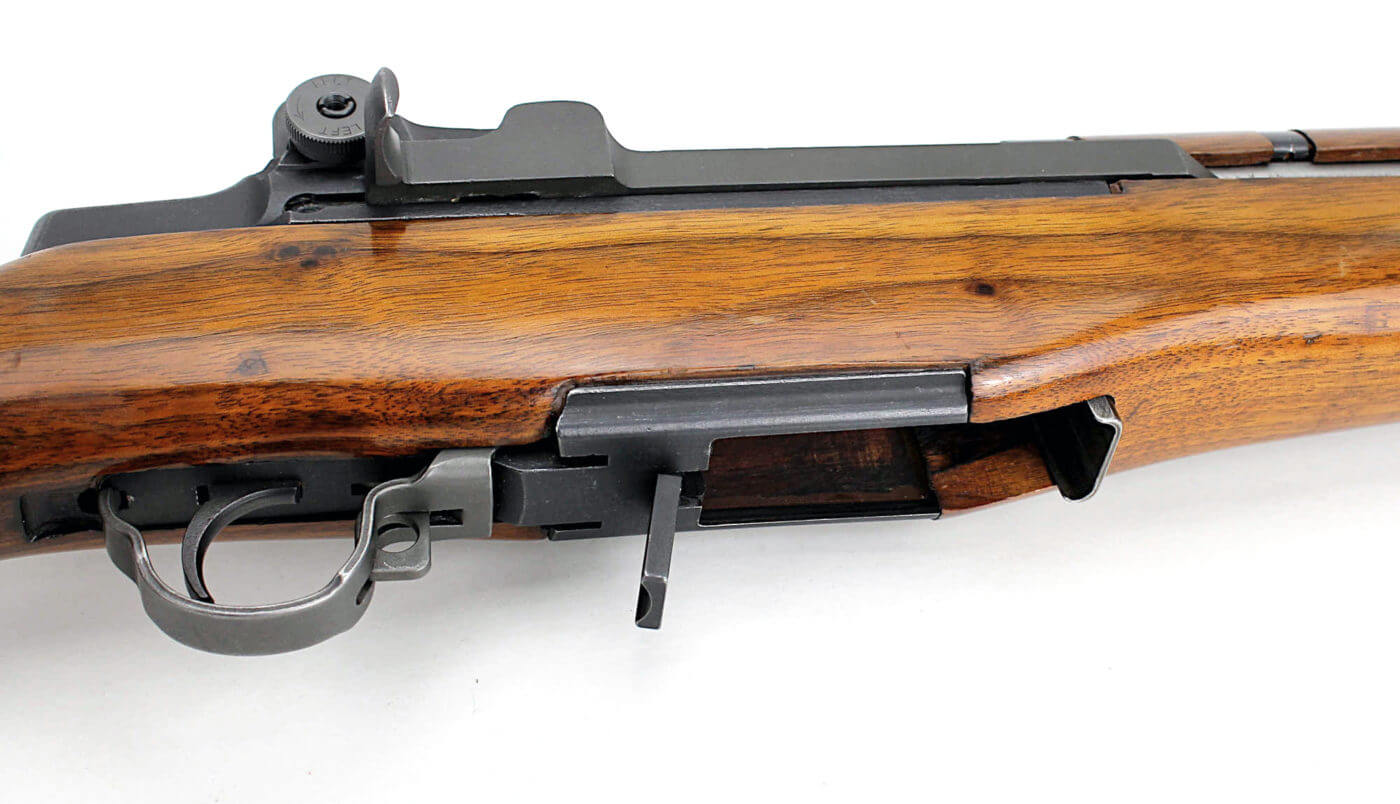
The Details
Without the magazine in place, this “T20” or “M14 Garand” appears at first glance no different than any other M1, except for the recoil pad. A closer look reveals an unusually figured walnut stock under a bright finish, a stainless steel barrel, and a magazine catch and forward guide protruding below.
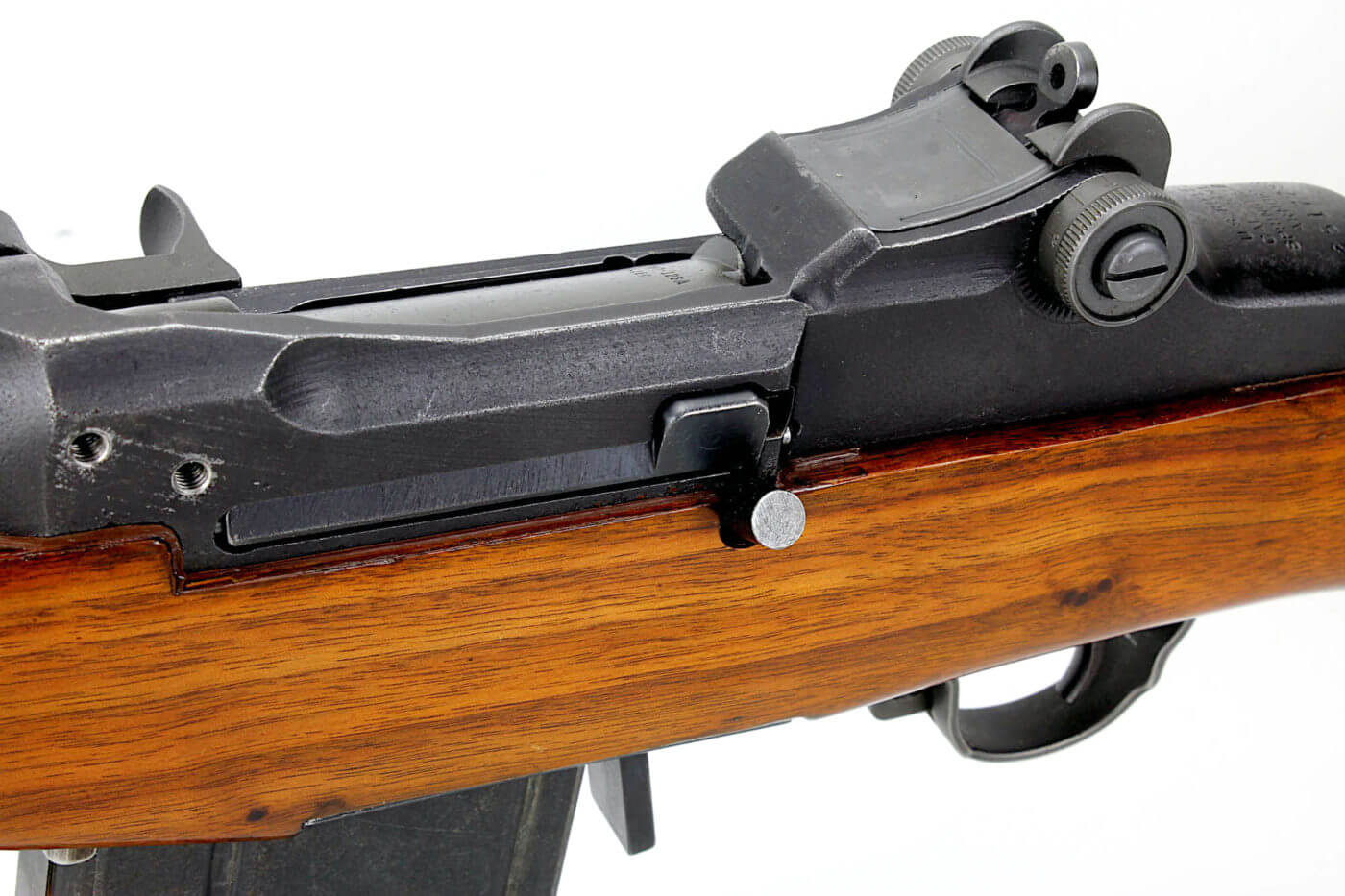
On the rifle’s left side, we can see the clip latch has been fitted with a curious projection, a thumb piece that activates the clip latch now serving as a bolt release and bolt hold-open, necessary because the Garand’s follower and associated parts are deleted. You can also see the receiver is drilled and tapped for a scope side-mount.
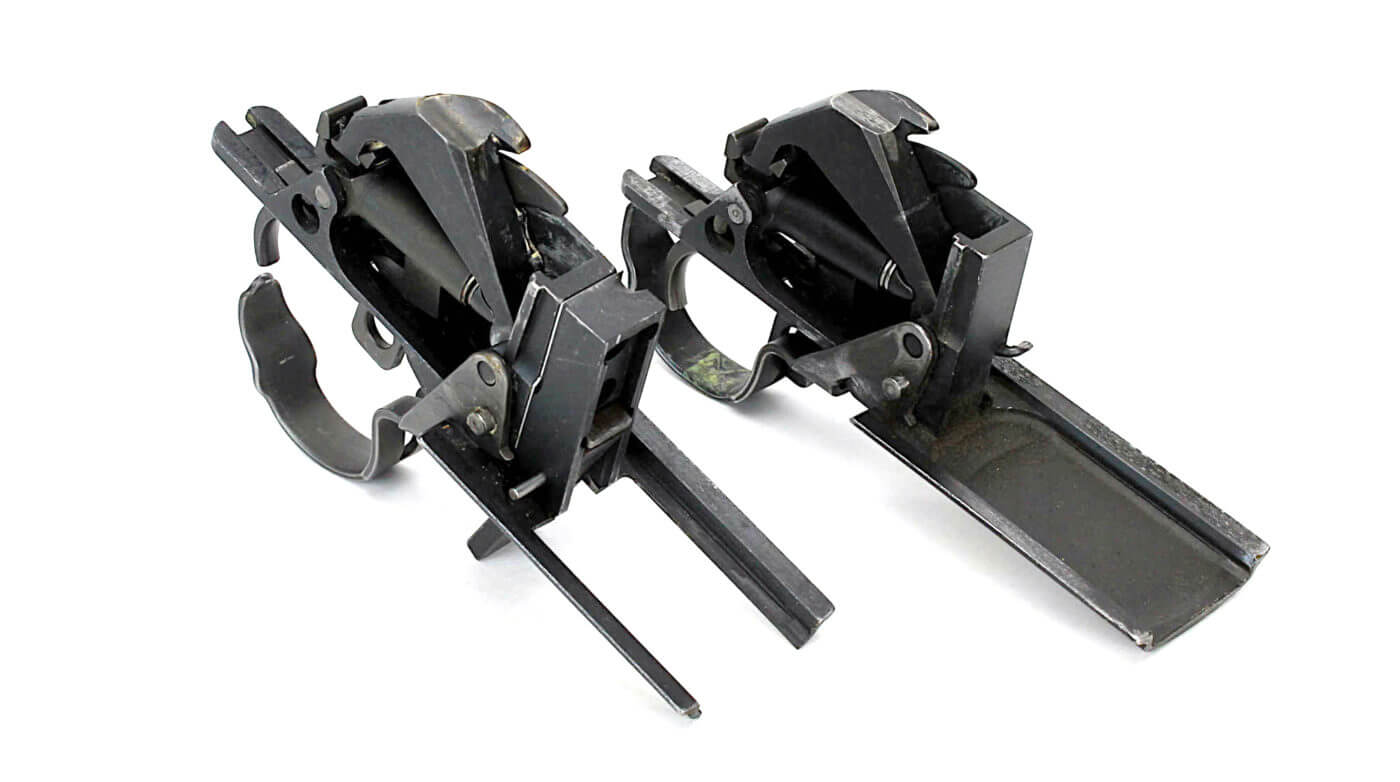
Removing the trigger assembly reveals considerable modification, including the addition of the mag catch assembly. The Garand’s original feeding mechanism has been gutted to accommodate the box mag; the receiver “legs” are gone and the receiver interior machined smooth to accept the M14 mag. Doubtless, the gas port is opened a couple thousandths of an inch, as was the practice when converting M1s to shoot 7.62 NATO.
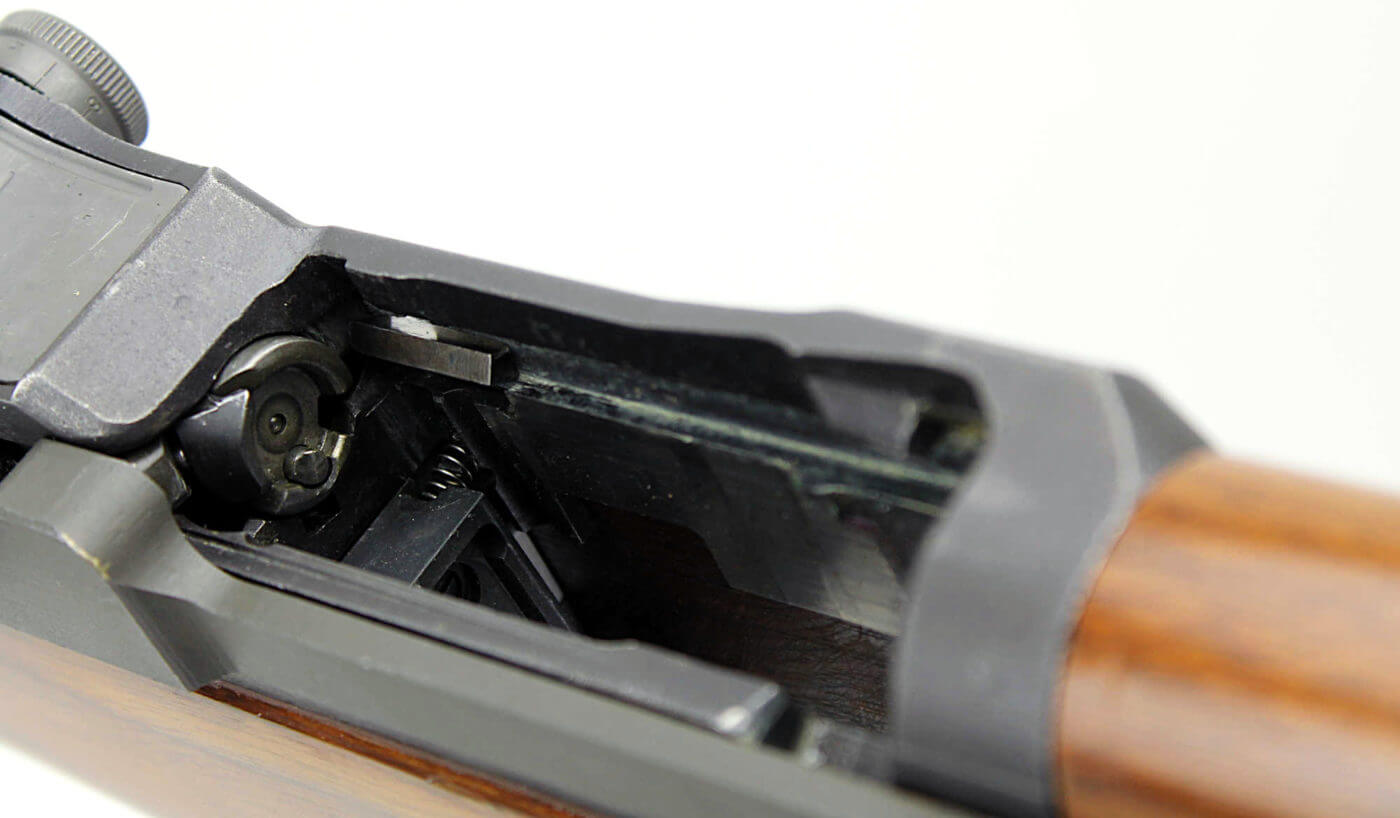
Hands On
Overall, the unknown gunsmith’s work is of high caliber, with all machining done cleanly and to tight tolerance — so much so that magazines need extra encouragement to seat and remove. That single minor complaint aside, the rifle operates flawlessly with milsurp 7.62 NATO ammunition, and shooting with a sling from prone position at 100 yards keeps M118 Special Ball inside the 10-ring of the SR-21 target.
With quality and performance like that, it’s no wonder that those lucky enough to own one of these fascinating few Garands tend to keep them.
Editor’s Note: Please be sure to check out The Armory Life Forum, where you can comment about our daily articles, as well as just talk guns and gear. Click the “Go To Forum Thread” link below to jump in!
Join the Discussion
Continue Reading
Did you enjoy this article?

 435
435






